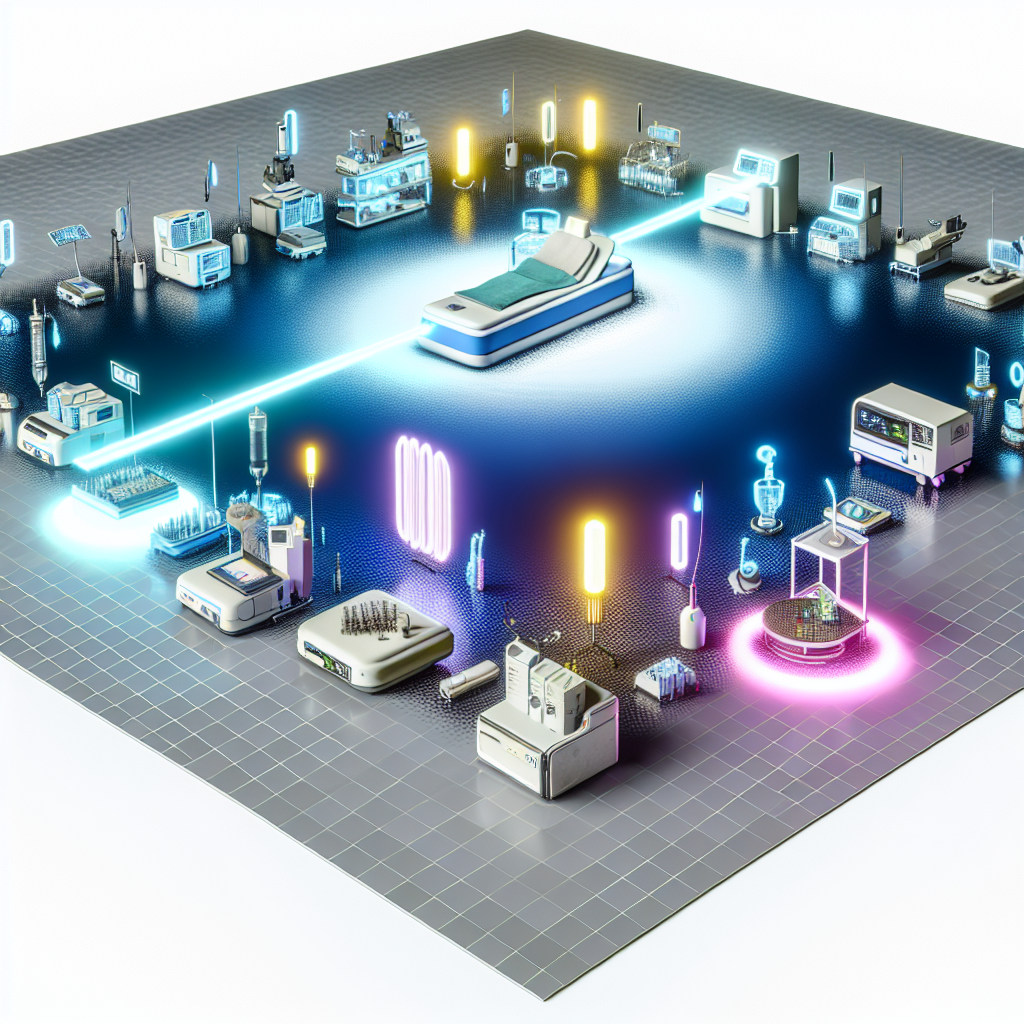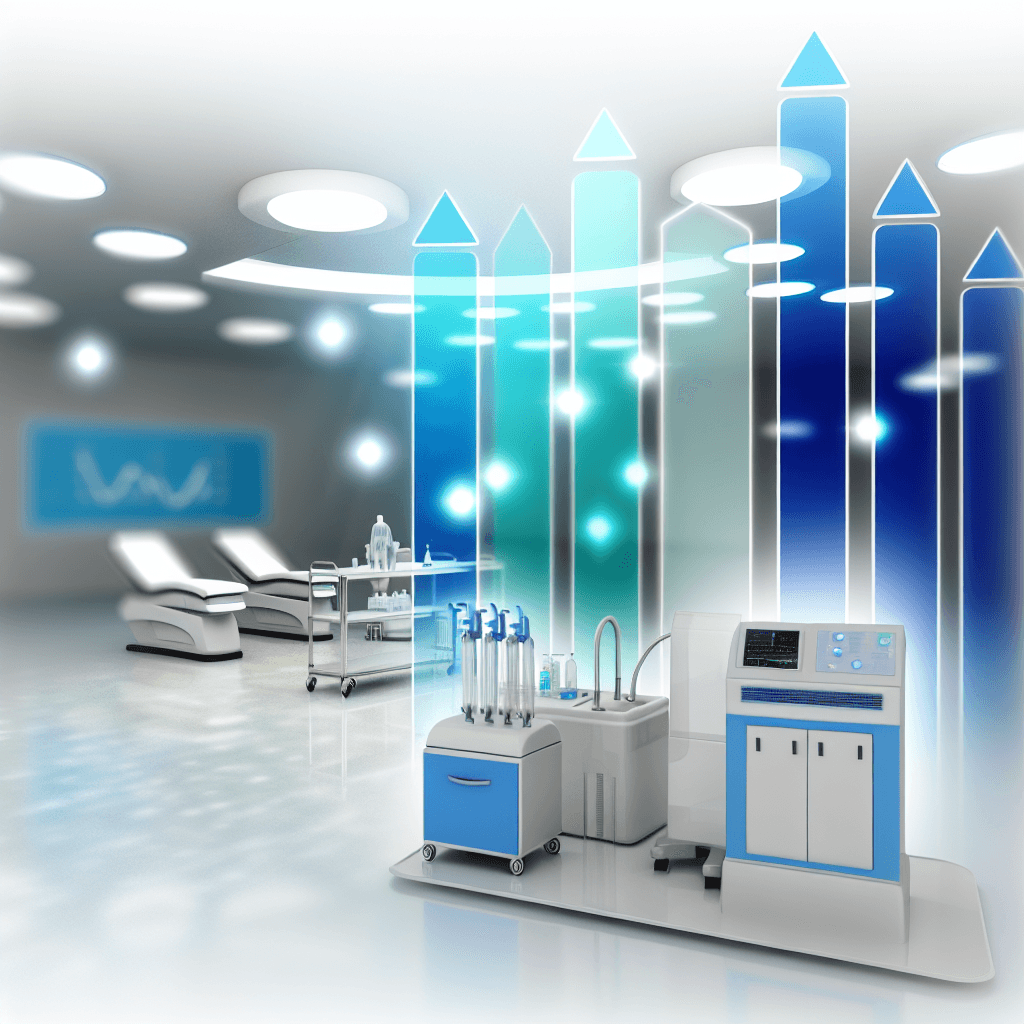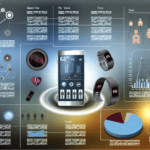Explore the healthcare and laboratory UV disinfection market size, share, and forecast trends.
Healthcare and Laboratory UV Disinfection Market Size | Share | Forecast

Table of Contents
Healthcare and Laboratory UV Disinfection Market Size, Share, and Forecast

The healthcare and laboratory sectors are increasingly adopting ultraviolet (UV) disinfection technologies to combat the spread of pathogens and ensure a sterile environment. This article explores the market size, share, and future prospects of UV disinfection in these critical fields, providing a comprehensive analysis supported by recent studies, case examples, and statistical data.
Understanding UV Disinfection Technology
UV disinfection is a method that uses ultraviolet light to kill or inactivate microorganisms by disrupting their DNA and RNA, rendering them incapable of performing vital cellular functions. The technology is widely used in various sectors, including healthcare and laboratories, due to its effectiveness and the growing need for hygiene and infection control.
Current Market Overview
The global market for UV disinfection equipment has witnessed significant growth, driven by heightened awareness of hygiene practices due to the COVID-19 pandemic. The healthcare and laboratory sectors represent substantial segments of this market, given their critical need for stringent infection control measures.
Market Size and Projections
According to a recent report by Grand View Research, the global UV disinfection equipment market size was valued at USD 2.8 billion in 2020 and is expected to grow at a compound annual growth rate (CAGR) of 14.5% from 2021 to 2028. The healthcare and laboratory segments are among the fastest-growing, due to the ongoing pandemic and increasing healthcare-associated infections (HAIs).
Drivers of Market Growth
- Increasing Incidence of HAIs: The rise in healthcare-associated infections has compelled healthcare facilities to adopt more effective sterilization and disinfection solutions.
- Technological Advancements: Innovations in UV technology, including the development of UV-C LED systems, have expanded the applications of UV disinfection in healthcare settings.
- Regulatory Support: Governments worldwide are implementing stricter regulations on infection control, which is further driving the adoption of UV disinfection technologies.
- Environmental Concerns: UV disinfection is a chemical-free process that reduces the environmental impact compared to traditional disinfection methods using harsh chemicals.
Challenges and Limitations
Despite its advantages, the adoption of UV disinfection technology faces several challenges. These include the high initial cost of equipment, the need for technical training for operation, and the potential safety concerns related to UV exposure. Additionally, UV disinfection is ineffective against biofilms and some types of materials that can absorb UV light, limiting its applicability in certain scenarios.
Case Studies
Hospital Implementation
A notable example of UV disinfection technology in healthcare is its use in a New York hospital system during the COVID-19 pandemic. The hospital implemented mobile UV-C units to disinfect isolation rooms where COVID-19 patients were treated. This measure significantly reduced the transmission of the virus within the facility.
Laboratory Application
In a research laboratory at a leading university, UV disinfection systems were installed in the HVAC system to reduce the airborne transmission of pathogens. This application not only improved the air quality but also provided a safer environment for conducting sensitive biological experiments.
Future Outlook
The future of the UV disinfection market in healthcare and laboratory settings looks promising. With ongoing technological advancements and increasing awareness of the benefits of UV disinfection, its adoption is expected to rise. Furthermore, the integration of IoT and smart monitoring systems with UV disinfection equipment could enhance the efficiency and effectiveness of these systems, leading to broader market acceptance.
Conclusion
The healthcare and laboratory UV disinfection market is poised for significant growth, driven by the need for effective infection control solutions and supported by technological advancements. While challenges such as high costs and technical complexities exist, the benefits of UV disinfection, particularly in preventing the spread of infections, make it a valuable investment for the future of public health and safety. As the market continues to evolve, it will likely offer new opportunities and solutions for maintaining hygiene and safety in healthcare and laboratory environments.
In conclusion, the UV disinfection market in healthcare and laboratory settings is not just a response to the current pandemic but a long-term solution to a perennial problem—ensuring a sterile environment free from pathogens. As technology advances and adoption increases, UV disinfection is set to become a cornerstone of modern infection control strategies.








